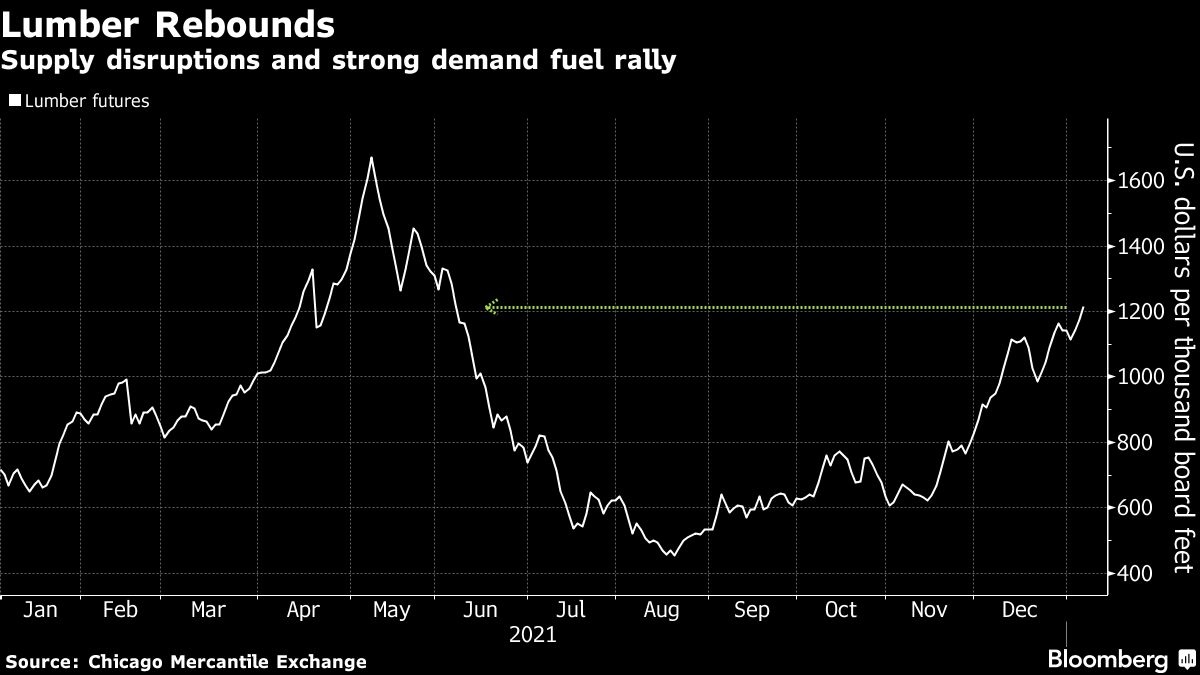Jan 6, 2022
Lumber is soaring again thanks to supply snags from B.C. floods
, Bloomberg News
Consolidation in the lumber industry in North America is something I’ve never seen before: Timber analyst
Lumber prices are soaring to levels not seen in seven months as the lingering effects of flooding in Western Canada disrupt supplies and shipments.
Lumber futures jumped 3.8 per cent to the exchange limit of US$1,219 per 1,000 board feet in Chicago Thursday, touching the highest price since June 7. Prices have been climbing since rainstorms hit British Columbia in November, damaging highways and rail lines and forcing sawmills to temporarily shutter operations. Persistent supply logjams and strong demand are fueling the rally.

The surge adds to swelling homebuilding costs when consumers are already paying more for goods ranging from food to fuel. Soaring lumber prices in the past four months have boosted the price of an average new single-family home by more than US$18,600, according to the National Association of Home Builders.
Lumber is the most common building material for North American homes and as much as 15 per cent of the wood used in the U.S. comes from B.C., according to ERA Forest Products Research.
“If we see lumber prices above US$1,000 for a prolonged period then it could negatively impact repair and renovation demand,” ERA analyst John Cooney said in an email. “When a deck project is now three times the price quoted last year, buyers will typically defer.”
Wood prices have been volatile since the pandemic began. They touched record highs in May after COVID-19 lockdowns spurred a building boom, then collapsed as sawmills ramped up production and high prices stifled demand. Even with the swings, lumber has been among the top performing commodities in the past year.




